By Dr. Raymond Cloyd
Have you noticed that your geraniums and petunias are not blooming (flowering)? Well, the “critter” or culprit causing the problem may be the caterpillar or larval stage of the tobacco budworm (Heliothis virescens). Adults are pale-green to light-brown with the forewing marked with four light wavy bands (Figure 1).
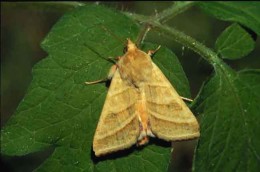
The wingspan is approximately 38.0 mm. Adult females can lay between 500 and 1,000 eggs within 2 to 3 days. Caterpillars are 38.0 mm in length when full-grown and vary in color depending on the host plants fed upon. The caterpillars (larvae) may be black, pale brown, yellow, green, and/or red. They may also possess stripes that extend the length of the body (Figure 2).
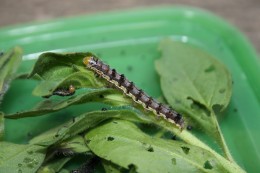
Furthermore, caterpillars may have small hairs or setae on localized sections of the body. The caterpillars tunnel into buds (Figure 3)
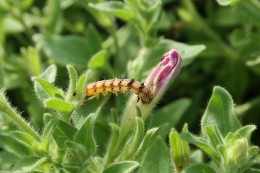
and feed from inside or chew flower petals, which appear ragged (Figure 4).
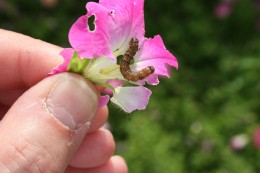
Damage usually increases during the growing season. Furthermore, caterpillars feeding inside flower buds on developing ovaries will destroy flowers. Be on the look-out for black fecal deposits (“caterpillar poop”) (Figure 5)
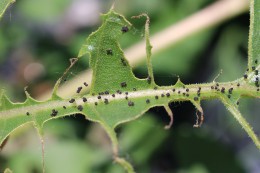
on the flower petals or on leaves below the flowers, which is a clear indication that the caterpillars are feeding. Tobacco budworm caterpillars will feed on a number of annual bedding plants besides geraniums and petunias, including: ageratum, chrysanthemum, nicotiana, snapdragon, and strawflower. Ivy geraniums may be less susceptible than other geranium types. The way to deal with tobacco budworm populations is to apply insecticides before the caterpillars tunnel into the buds using materials containing the following active ingredients: spinosad, cyfluthrin, permethrin, or bifenthrin. Be sure to thoroughly cover all plant parts as tobacco budworm caterpillars will also feed on plant leaves.
You can find more information on tobacco budworm feeding on petunia in the following article:
Davidson, N. A., M. G. Kinsey, L. E. Ehler, and G. W. Frankie. 1992. Tobacco budworm, pest of petunias, can be managed with Bt. California Agriculture 46 (July-August): 79.